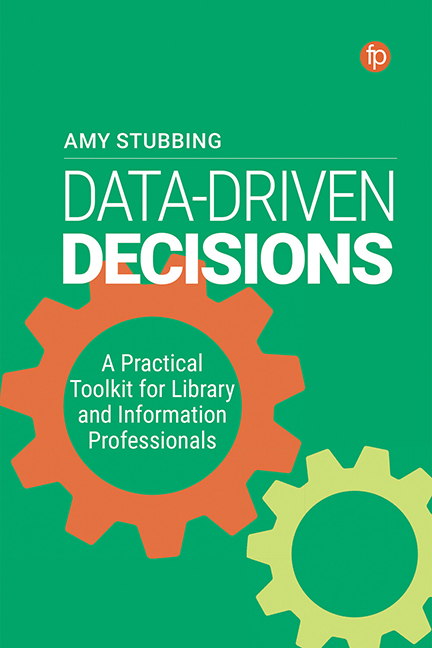11 - User Experience and Qualitative Data
Published online by Cambridge University Press: 04 August 2022
Summary
Introduction
In this chapter we will explore a key tool in data-driven decisions: user experience. Over the next few pages we will learn about:
• UX research and how it can help you
• UX techniques and which best help in answering your questions
• recruiting participants and ensuring your research is conducted ethically
• analysing data
• deciding what to do with your data
• things I wish I knew before I started my first UX project!
What is UX?
As you may have guessed, UX is just the abbreviation of user experience. We pronounce it as ‘yoo – aex’. But what is UX? ‘User experience’ is simply how someone feels about using a product or service (Schmidt and Etches, 2014, 1). In our case – how our library users feel about the services provided by our library.
UX has its roots in ethnography as its methods (such as observations, interviews or cognitive mapping) are used by ethnographers, anthropologists and many other specialists in related disciplines. It is especially prominent in web and applications design, unsurprisingly because big companies such as Facebook or Google want their apps to be as innovative, tempting and attractive to their users as possible.
In the SCONUL report Mapping the Future of Academic Libraries, UX was recognised as the fifth critically important library skill next to strategic and relationship management, and understanding the research process and negotiations (Pinfield, Cox and Rutter, 2017, 44). Wherever there is a product or service, there are clients and users too, and the goal is to make the products or services useful and attractive, so users will want it and will come back for more. Needless to say, it is worth investing your time to learn about it!
The four stages of UX
The UX research and design process should ideally have four stages:
• Discover: plan and conduct research.
• Define the data analysis and generate ideas.
• Develop ideas into actions and develop a pilot or prototype of a serviceor a product.
• Deliver: launch the final version of the product or service (Priestner,2020, 3).
Undertaking UX research in a library
We all want our libraries to be the best they can be, and to be functional, with satisfied, frequently visiting users, but as with other data gathering processes discussed in this book – for UX you need to have a good think and identify what you want to find out.
- Type
- Chapter
- Information
- Data-Driven DecisionsA Practical Toolkit for Librarians and Information Professionals, pp. 107 - 126Publisher: FacetPrint publication year: 2022



